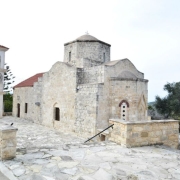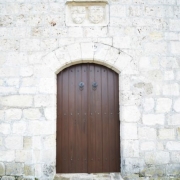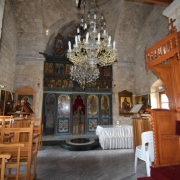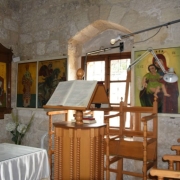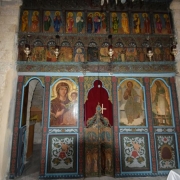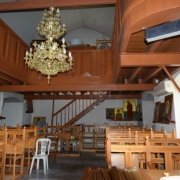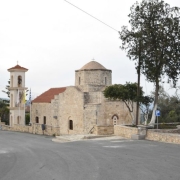The main church of the village is dedicated to Panagia Chryseleousis. It was built in the late 15th or early 16th century and belongs to the so-called Frankish-Byzantine style that combines Byzantine and Gothic elements, a dome and arches. The architecture of the church symbolizes an older Byzantine type, the single-aisled cruciform with a dome with the northern and southern limbs of the cross compressed, which are formed rudimentarily on the northern and southern walls.
The drum of the dome is octagonal on the outside. The masonry is isostructural and meticulous. The church has undergone various interventions over time. The oldest were probably made in the early 17th century, when the Gothic window of the apse of the sanctuary was walled in and in its place inside the apse a niche was created in which the Virgin Mary holding the baby was depicted.
Also in the early 20th century, the western wall of the church was demolished and an extension was made so that the enlarged church could meet the needs of the community. The church is decorated externally with two coats of arms which are probably spolia and were used for decorative purposes.
One of them belonged to the well-known medieval Gour family while the other is similar to the coat of arms of the noblewoman Alice Neville which is found on her tombstone in the Armenian church of Nicosia.


